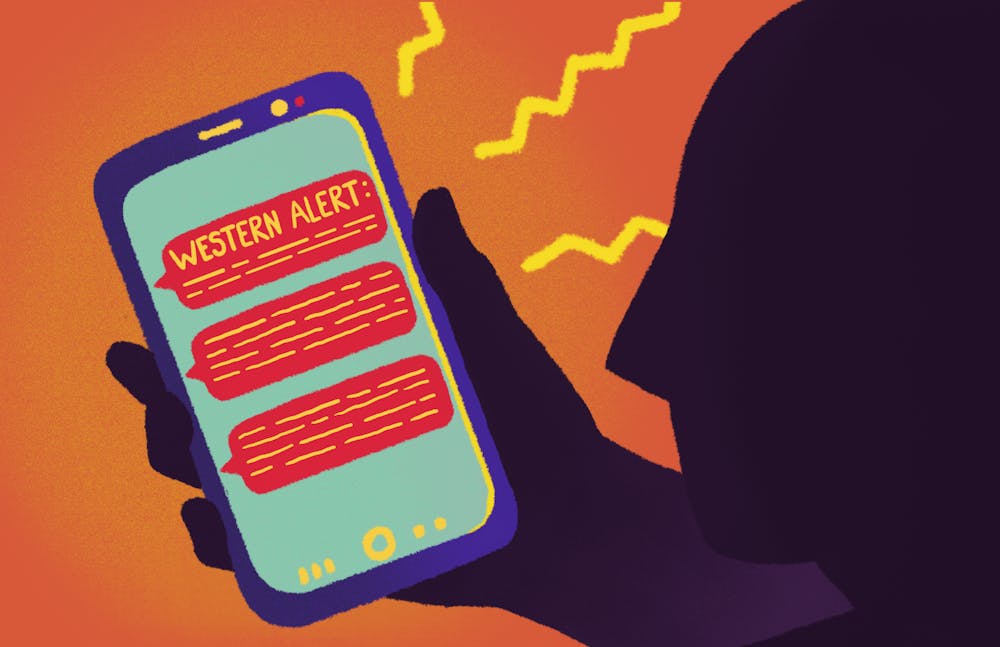On the morning of Tuesday, Jan. 9, Western Washington University students received a Western Alert about an armed robbery behind the Wendy’s on Samish Way. While these messages seem simple, it takes an entire team of people, including university communications and police, to craft them.
During this specific incident, two Western Alerts were sent out. Western Alerts come in the form of texts and emails through the company RAVE. Their main purpose is to inform students of threats near or on campus.
John Thompson, assistant director of university communications at Western, said in an email that the first thing he and his coworkers do is get in touch with the university police department. Other campus stakeholders join them if needed.
When the first alert was sent out, the university communications officers were unaware that the Bellingham police found no victim and no suspect, Thompson said.
“The available details can be scarce or slow in coming, and a decision might be made to wait for more information,” Thompson said. “Other times, we collectively feel we have enough to move forward, and we begin crafting the message immediately.”
There are three types of emergency alerts at Western: Western Alerts, WWU crime notices and WWU campus advisories. The only time Western Alerts are sent out is when there is an imminent threat to the health and safety of campus, Thompson said.
Though protocol may vary across universities, the safety of students is consistently a top priority. Robert Cepeda, the emergency management coordinator for Central Washington University, works with CWU’s communications office to send out alerts. In addition, he oversees the community emergency response team for Kittitas County and central Washington.
“My day starts looking at what is happening around the world in any kind of way, whether that’s negative or positive,” Cepeda said.
From there, he focuses on what might affect the students. If it is a violent event, he sends alerts to warn them about their surroundings, much like the team at Western. He has found that the best way to get people to pay attention is to use the alert system sparingly.
“We minimize [the alerts] as much as possible so that people won’t ignore the system, so that people will go, ‘You know what? This is important.’ People have a tendency to start ignoring that,” Cepeda said.
Cepeda follows the advice of a blog called The Warn Room, ensuring all of the alerts are worded correctly and are easy for readers to grasp. The Western Emergency Communications group strives for the same high quality and has monthly meetings to discuss the wording of alerts.
In regard to the incident behind Wendy’s, one Western student, Faolan Barrett, said she did not see much news about the incident other than the Western alert.
“I felt like they did a pretty good job of getting information out quickly,” Barrett said.
Western students are automatically signed up to receive Western Alerts. They can learn more about the university’s emergency preparedness at embc.wwu.edu. Families can sign up for alerts here.
Cordelia Longo (they/them) is a senior at Western majoring in political science. In their free time, you can find them listening to Taylor Swift and asking to pet strangers' dogs.






